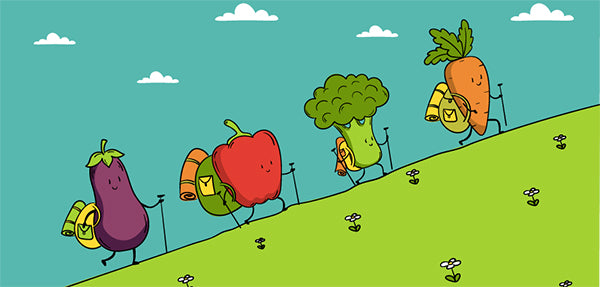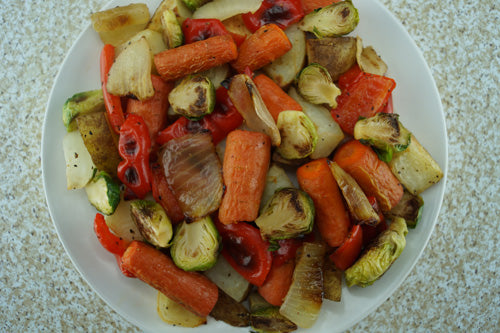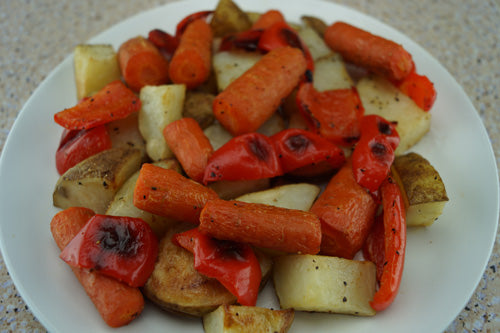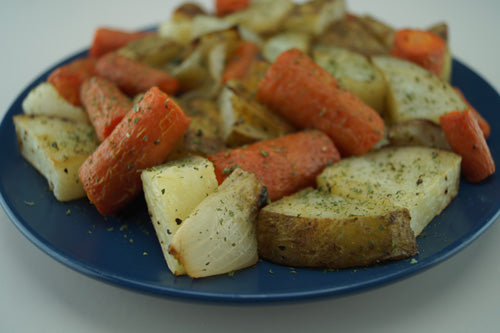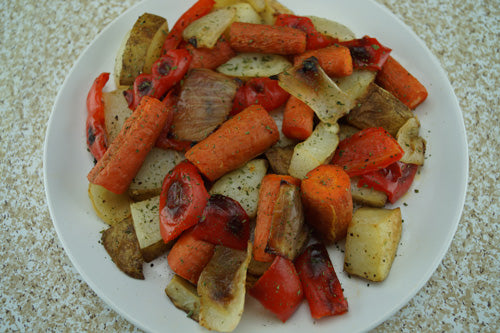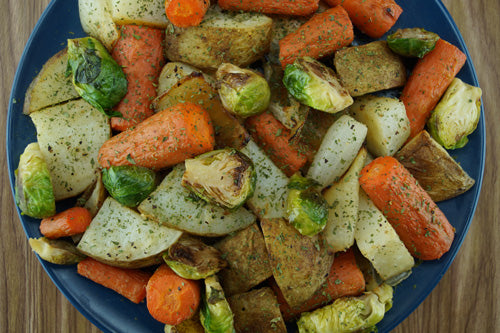5 One-Pan Roasts For A Healthy Meal Without The Fuss

Hate doing dishes? Of course you do. Got a million things to do and need a set-it-and-forget-it meal? Yes, ma’am. Well then check out our favorite Skillit recipes that require minimal cleanup and lets you get on with your day as your meat and veggies bake to a golden perfection in the oven.
1. Everything But The Kitchen Sink Veggie Roast
Just when you thought this insanely tasty and healthy meal couldn't get any better, you realize there are no dishes to do! Chop the potatoes and veggies, roast them until golden-brown perfection, and you got dinner ready.
2. Cajun-Style Roasted Potatoes, Carrots & Peppers
Don't be afraid to get a little creative in the kitchen and try some unorthodox flavor combinations. The cajun spice mix brings out a hidden side of the taters and veggies.
3. One-Pan Root Vegetable Roast
Potatoes, onions, carrots and endless seasoning possibilities. Chop the veggies up, throw whatever spices you want on them, roast them for 30 minutes or so, and you got a healthy meal with almost no cleanup.
4. Hassle-Free Garlic-Rosemary Roasted Potatoes, Onions, Peppers & Carrots
At Skillit, we're all about maximizing flavor while minimizing our effort. That's why this one-pan, vegetarian roast is one of our favorites. Chop the potatoes, onions, bell pepper, and carrots, season with our garlic-rosemary spice mix, pop them in the oven until they're crunchy on the outside and soft on the inside, and then get ready to feast.
5. Easy One-Tray Roast with Sprouts, Carrots, Onions & Taters
Hate doing dishes? So do we. That's why we love throwing everything together on one tray to cut down on cleanup time. Potatoes and root vegetables all bake together on one sheet so you have more time to do the things you love.
Also in The Dish

Shopping For One
Cooking for one can seem like a fool's errand - so much time and effort to feed just one person. The trick is to minimize your effort while maximizing your output, or in cooking terms, do as little prep work as possible to produce a lot of food (all while keeping costs down, of course). Here are some tips to make cooking for one easy and productive:

How To Navigate The Grocery Store
Most grocery stores have the same layout, with fresh foods (produce, meat, and dairy) on the perimeter of the store, and processed foods (with longer shelf lives) on the aisles in the middle of the store. Since we try to primarily eat whole, unprocessed foods, we tend to stick to the edges of the store as much as possible.

What To Look For In The Nutrition Label
When comparing our options in the grocery store, we look at the ingredient list and ask ourselves a few key questions. How many ingredients do this have? Do I know what these ingredients are? Is sugar one of the first few ingredients? There’s no hard and fast rule, but generally the fewer ingredients, the better. The more easily pronounced ingredients, the better. The farther down sugar occurs on the ingredient list, the better (if it appears at all).



